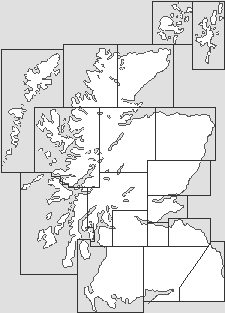 Falkirk Distillery |
Falkirk Distillery is one of the new breed of Scotch whisky distilleries: it was granted planning permission in 2010 and began production of new make spirit in the last quarter of 2020.
The distillery is very easy to find, being located only a short distance from where the A9 begins at Junction 5 on the M9. And there’s no doubting that you are at the right place when you arrive. The two pagodas on top of the central block show clearly that this is a distillery, and any remaining doubts are quickly dispelled by the very large “Falkirk Distillery Company” painted in black on the front wall of the white buildings. The exterior is strongly reminiscent of Dalwhinnie Distillery, also just off the A9 but in a very different part of the country.
When we visited, Falkirk Distillery was still something of a work in progress. The distillery itself was complete and open for tours that are bookable via their website, linked from the Visitor Information section of this page, and the distillery shop had been added. A large restaurant was still being fitted out, and a range of other shops was in the final stage of construction. But the distillery itself had been open and in production for long enough to have released its first single malt Scotch whisky. (Continues below images...)
 Spirit and Feints Safe |
 The Stills |
The production hall at Falkirk Distillery is an impressive place, designed by the man who founded the distillery, George Stewart. His background in electrical engineering is reflected in the way even the smallest of details, such as the complex wiring of the “human machine interface” that allows the operation to be controlled by just two people, have been done so beautifully.
What you find in the production hall is the new bookended by the old. Ten large stainless steel washbacks, set in two rows of five, dominate much of the centre of the hall. They represent the new. At one end of them is a large mash tun that has a huge amount of character and obviously predates the distillery itself. At the other are the wash still and spirit still, which also speak of a life lived elsewhere before coming to Falkirk. You can find out more about Making Malt Whisky from our series of feature pages showing the stages in the process.
The sense of age is because the stills and mash tun started life at Caperdonich Distillery in Rothes on Speyside, which closed in 2002 and was demolished in 2010. A great deal of the character of the spirit produced by a distillery comes from its stills and the idea of reusing the stills and mash tun from a long-established Speyside distillery seems inspired.
Falkirk Distillery might still have been a work in progress at the time of our visit, but a huge amount has already been achieved here and the potential for it to become a major visitor attraction is considerable. In case you're wondering, the malted barley used here is bought in, so the pagodas are for show rather than function. But they do add considerably to the character of the buildings and very few distilleries malt their own barley anyway!
 Another Exterior View |

|
|
|
Visitor InformationView Location on MapGrandsable Road, Polmont, Falkirk, FK2 0WA. Tel: 01324 281086. info@falkirkdistillery.com www.falkirkdistillery.com Opening Hours Tours & Admission Grid Ref: NS 925 793 What3Words Location: ///shape.brings.slate |
 One of the Pagodas |
 The Mash Tun |
 Inside the Mash Tun |
 Underthe Mash Tun |
 Washbacks |
 Production Hall |
 One of the Bonded Warehouses |
 Inside the Bonded Warehouse |
 Spirit Turning into Whisky |






